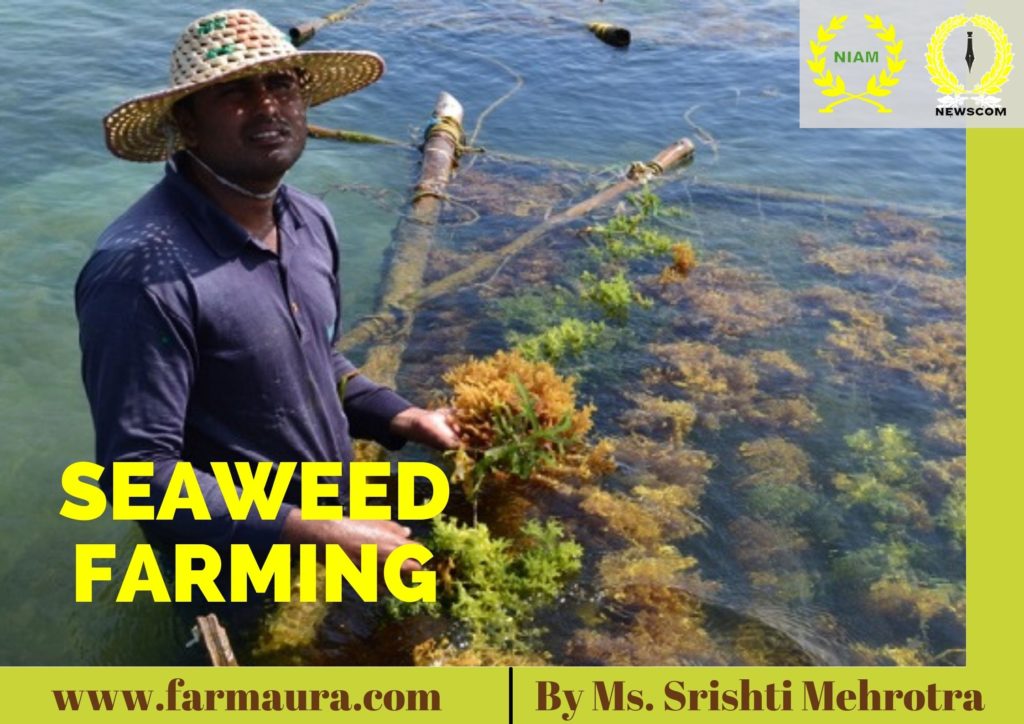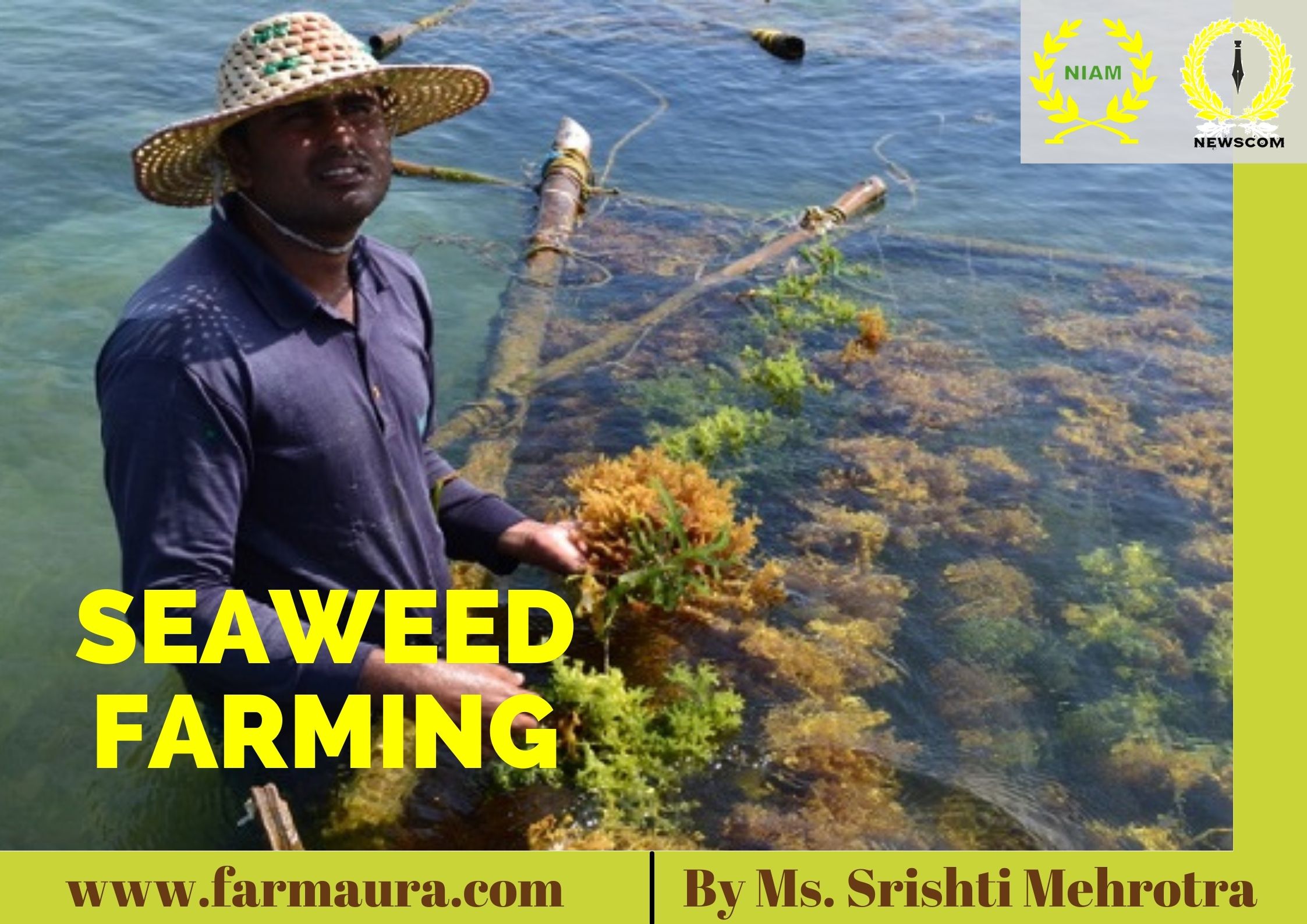
Seaweed being the wonder plant in the sea is gaining popularity due to its continual increase in demand as a sustainable agricultural approach. Seaweed: the primitive plant without any root and shoot system, is widely distributed from the tidal to varied depth in the sea. Seaweed is found to be an excellent source of Vit A, B1, B12, C, etc.; minerals like Ca, P, K, Na and is a major component of many bioactive compounds which have yielded molecules for dreadful diseases. Seaweeds are mainly utilized in phycocolloid industries, the prime products of seaweed include Agar, alginate, carrageen which are commercially valuable and find utilization in various industries. They are used in food industries for their gelling, thickening & stabilizing properties.
The demand from the phycocolloid industry in India is great but the present production from natural habitats is insufficient to cater to the needs of the local industry. Although, they can grow at a very fast pace around > 30 times to those of land-based plants, and hence based on increasing demand they possess immense potential to serve as a reliable livelihood to the coastal communities. This gap between the demand and supply can be bridged through mariculture practices for seaweeds by cultivating useful species on a commercial scale. Continuous supply, improved yield, and quality as well as conservation of natural seaweed beds are some of the important advantages of seaweed mariculture.
The major players in the Seaweed market are China, Korea, Japan, etc. which covers 90% of the international seaweed market. In India, seaweeds are grown abundantly along the coast of Gujarat, Tamil Nadu, and the Andaman and Nicobar Islands. Around 221 species of seaweeds are prominently grown commercially out of them, 145 species are used for food and 110 species for phycocolloid (Agar) production. Cultivation is done predominantly with the assistance of the Single rope floating raft (SRFR) method using coir and nylon rope. Seaweed farming plays a pivotal role in carbon sequestration and promotes favourable conditions for shellfish production.
India is rich in algal biodiversity and having large stretches of coastline i.e. 17,000 km for its cultivation accompanied by a strong fisher folk base. Seaweeds are an untapped source of income from the seas, which remained unnoticed. In India, with the advent of Kappaphycus cultivation along the Tamil Nadu coast, some awareness has been brought. However, the local communities, though little awareness, remain oblivious to this treasure in their vicinity and lack of commercial cultivation practices, infrastructure, and supporting policies have made its growth momentum slower. The government of India has discerned the fact that instead of only focusing on scarce resources like land and water, opting for the path of seaweed farming.
On 1st February 2021, the Union budget of 2021-2022 was presented by Honorable Finance Minister Smt. Nirmala Sitharaman has focused on the budding potential of seaweed farming in transforming the lives of several coastal communities by aiding in generating income and large-scale employment. To promote it further, GOI proposed the establishment of Multipurpose Seaweed park in Tamil Nadu. This initiative will help to embellish the nutritious food and economic assets significance altogether.
Today the seaweed cultivation techniques are standardized and are becoming more economically feasible. Its appropriate combination with other resource management tools, seaweed farming can contribute to an integrated seascape management approach by providing one component of a diversified household livelihood strategy.




